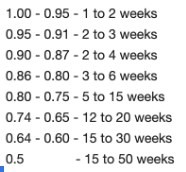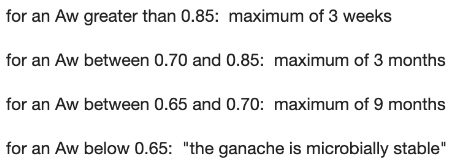-
Posts
116 -
Joined
-
Last visited
Profile Information
-
Location
Europe
Recent Profile Visitors
3,824 profile views
-
@Jim D. These smaller machines, depending on your quickness as a washer, it can take anywhere between 15-30min to properly clean a melanger by hand. If you do several batches in a row of the same stuff then obviously you reduce cleaning time in total. You do need everything in very small pieces, like cocoa nib size, or preferably powder. Putting whole almonds, hazelnuts, cashews etc in there just calls for issues. The stainless steel upgrade is a major upgrade, but there are still plastic parts around the stones that cause headache. The stone centers are lined with plastic, and those can wear out in a couple of sessions if you're not very careful with how tight you've turned the top adjuster etc. There are the white plastic rings that are meant to protect from that, but you can wear those protectors out in one session too. The blue bushings have been completely useless for me (though I guess they aren't essential if you run the machine full enough so fat lubricates the stone centers). I think Bhavani and the team is working on these issues, but no idea when and what they come up with. It's great that they are improving though. So do expect something to break. I've spent at least a cool 100 hours taking things apart, putting back together, trying to fix something, emailing the team, waiting for replacements etc etc. I've probably had a fair bit of bad luck too, but these aren't machines that will likely run even a full year without some issues. If that's a deal breaker or not depends on the user and their needs and skills etc I think.
-
I'll try in this topic instead of opening a new one. Looking for a professional combi oven in the size of approximately 10 x GN1/1 pans, one of the standard sizes for most ovens at least in Europe. Had a couple of questions which seem to be very hard to find answers to, so here we go if someone is able to help. In general or specifically for any pro versions, how much weight can one level bear? Is 25 kg going to be OK on one level (nothing else in the oven most likely during that time)? One GN 1/1 pan that is 200mm deep holds 26 litres, so I'd assume the ovens are designed to hold at least about 26 kg on one level without issues? How precise are the ovens at the lowest temps of 25 or 30C? I'm looking at using the oven for fermentation, for example making koji, which would require the oven to be pretty close to 30C and be able to generate some steam, preferably. Dehydration of basically anything I assume works fine on pretty much all models, but how about smoking? I'll have a big professional restaurant hood above the oven, but does smoking in general work in these, is that possible? Are there major differences in terms of cleaning the machines and how well it works and how easy it is? And if you have any feedback on some specific models and why you thought they were good or bad, happy to hear!
-
Great discussion and info here! I've got a Humimeter RH2 Aw meter, and I've been wondering a lot about the values I get. It should be accurate to 0.01 values (0.04 around 0.80-0.98 though), and when testing the recipes over again, it gets around the same result. But when testing recipes from different (reliable) sources where they've given the Aw value, I'm rarely getting even close to it. Most simple example: recipe with 45g cream (36% fat), 5g glucose, 55g hazelnut praline (50-50), 45g milk chocolate (36% cocoa). Author is saying it's Aw 0.75, I got 0.80. Which is a huge difference, and even if my machine's error made it 0.80 instead of 0.79 for example, it'd still be a big difference. Same thing has happened with other recipes too, with +0.05 differences between my and the authors' Aw values. There's been discussion previously about how you measure also matters. I let the samples come to room-temp, and mix them before measuring to avoid artificially low readings due to drying on top of the sample. Also filling the measurement jars as instructed by the manufacturer. My room-temp is currently very cold, around 17C. I'm not sure whether that could impact, though I'd think not if the sample is the same temp as the room.
-
Thanks @Rajala! It's understandable that no one wants to really give, or is even able to give precise figures, as you mention why. Still, guidelines can be helpful, even if rough. For example if you get to low-mid .7 Aw values, you can be fairly confident that things should last at least a few months if kept for example under 20C. And if you're selling these things, be very careful if your recipes are .80 or above. It would be great to hear if you find something practical as to determining shelf lives from that book! Those tend to be pretty hard books to understand without better understanding of chemistry. Hope you get much out of it though!
-
On the topic of Aw values and shelf life, @Rajala may I ask if you talked about this with the food safety professor? I think these have both been posted here earlier, so I assume it is fine to share them. One from Melissa Coppel, the less-precise from J.P. Wybauw. JPWs guidelines are obviously quite rough, as a filling with 0.85 Aw should be stored much less time than one with 0.70, when he has lumped them together into one bracket. MCs figures also have some logical inconsistency I guess, for example as 0.75 is said to be good for 15 weeks max, while 0.74 seems to be 12 weeks, etc.
-
Thanks for posting this! I assume the temperature of the sample on both occassions was closely the same, right?
-
I've had similar experiences and have been struggling a bit to find out the best practice for measuring Aw. The fluctuations can be quite wild. I can't come up with any other explanation though than evaporation or crystallisation "locking" the moisture over the few hours it is sitting. Would be great to hear if anyone has better knowledge on this! Logically I'd think the best practice would be to emulate chocolates waiting to be capped, so sitting in open container the same time as in the shells, as Jim D. did. Container has much larger surface area though, not sure if it matters.
-
How does powdered cashew milk differ from just using cashews? 🤔 Drying cashew milk gets you just the nuts plus some gums etc? Or am I missing something?
-

Displaying Chocolate Bonbons - refrigerated or ambient temperature?
EsaK replied to a topic in Pastry & Baking
I'm wondering what's the benefit of having a special chocolate display case? Isn't it better to use that money towards an AC/air-to-air heat pump (I'm not sure if that's the name in the US) to cool the whole space down, get a chocolate/wine fridge and just build/get a display case without cooling? Obviously differs from place to place and what's available, but in general for example for 6-7K, you might get all of the three, instead of just the display case. That way your whole space can be kept around 20C year-round, with humidity in check (obviously big variations geographically here too) and a more personal display case. I think I've seen many US chocolatiers go this route, possibly the most known examples being Elbow Chocolates, andSons etc who I think have cases without any cooling but presumably the whole space instead. Happy to hear pushback! -

Molded and Filled Chocolates: Troubleshooting and Techniques
EsaK replied to a topic in Pastry & Baking
Why not just leave that bit out, at least the onion? I'd guess that that was the main culprit of being off-putting? Rosemary/thyme caramel, cranberry jelly and crispy chicken skin and chocolate layer is already very much ticking the boxes in my view. 😊 -
IKEA stainless steel pot with sugar to cover the bottom, 110C, slow mode. Sugar stays granulated after heating to 110C and staying there for 5 minutes or so.
-
And there wasn't a problem. Apologies if my post came out as if there was! The issues I had were with different pots and pans, not the one I did this quick test with. Hmm, can't remember having the issue that way around, at least not with a medium like water. If you just put a pan in there, turn the dial to 120-150C or whatever, intensity on the highest, and a piece of some protein for example, you'll likely get quite a pretty hard sear on it, might even burn. But if you wait until the pan control shows 120C or whatever, then put your protein in, I doubt you'll burn anything. I'm not an expert, but my amateur guess is that the temperature ramp up is so intensive that it overshoots quite a bit in that phase, and if you have something in the pan during that time, it's very possible it burns? My pots and pans are from various places and various kinds (some IKEA, carbon steel De Buyer, miscellaneous stainless steel pots).
-
Just did a quick test with a small pot and +5cm or so water in there. Heated to 50C. Pan control said 50C in a minute or something. Thermapen climbed very slowly to about 40C, at which point I started stirring. A few moments after and Thermapen read 50-51C. Bought mine from the same place as you did. I argued with them for quite some time after realizing that it works very inaccurately with many of my pots and pans. Can't really recommend the place if you're looking for great customer service.
-
Alright. Could be a faulty one? Honestly pretty hard to say from here I'm afraid. I think, though I haven't checked this in a long time, mine at least gives the same temp with the probe and a Thermapen. I haven't deep fried with mine, but based on other stuff I've done, I would expect it to recover to the set temp pretty quickly (and overshoot some if using the speedier settings). All in all I think mine behaves more or less as expected, assuming the pans I use don't have grooves on the bottom or anything like that.
-
220-240V yep. I haven't done more precise testing in a long time after purchasing it, but I think a large part of my issue was that the pan temp control doesn't work accurately unless your pan is precisely like the sensor would want it to be (anything other than a completely smooth flat bottom for example). Can't remember if I have had issues with the probe control being unreliable. I don't know what kind of issues did you have, what kind of inaccuracy?





